It seems we can’t find what you’re looking for. Perhaps searching can help.
Sign Up for newsletter!
Subscribe to get the latest eBook!
Hotline






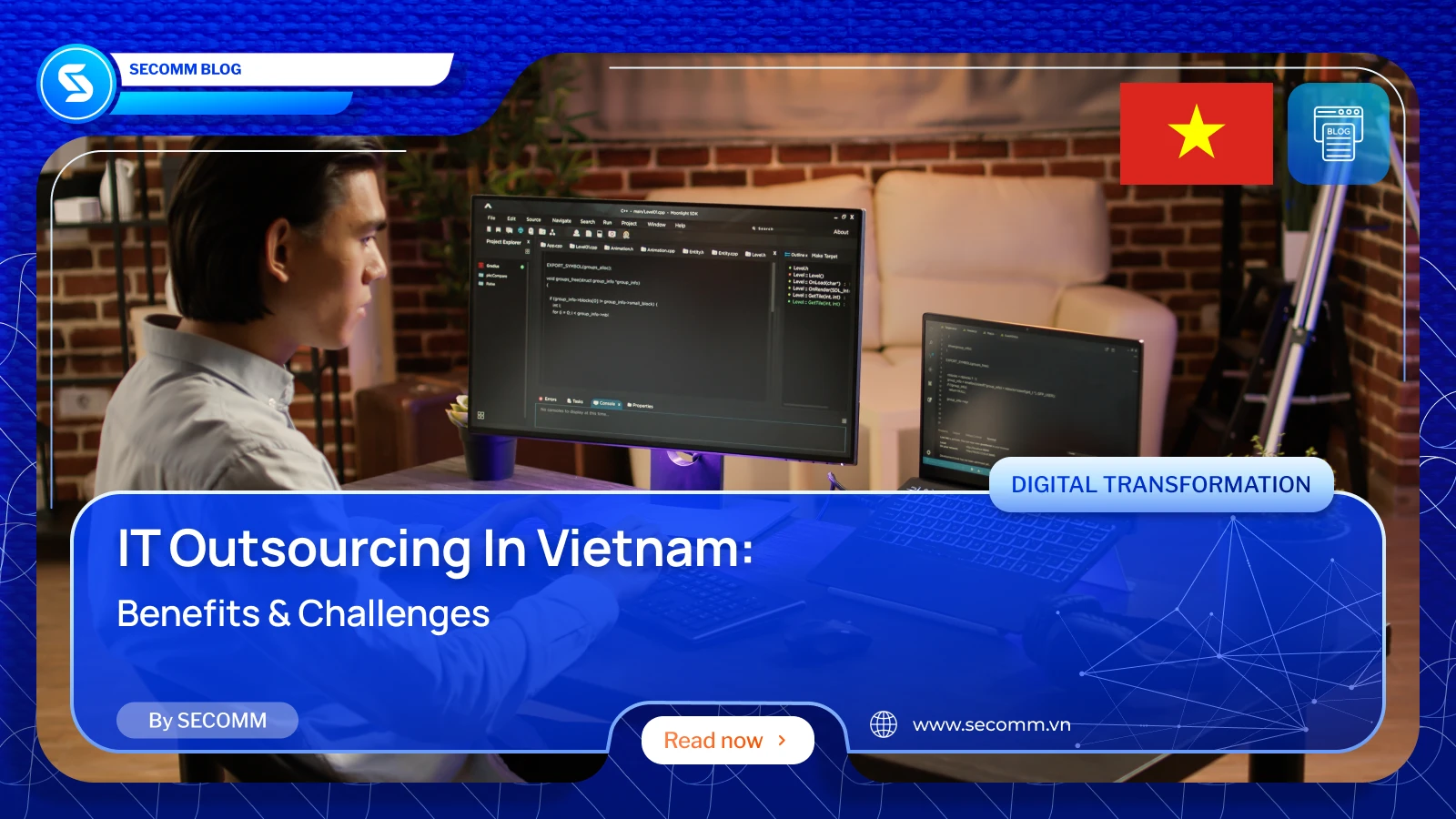
IT outsourcing has become a prevalent strategy in today’s business landscape, offering several advantages such as cost savings, access to specialized expertise, and operational agility. For years, Vietnam has stood out as a prime destination for IT outsourcing due to its favorable business ecosystem, competitive labor costs, and government support.
In this blog post, SECOMM explores why Vietnam is an ideal choice for businesses seeking to outsource their IT requirements. We’ll delve into the country’s strengths and potential drawbacks, providing valuable insights for decision-makers.
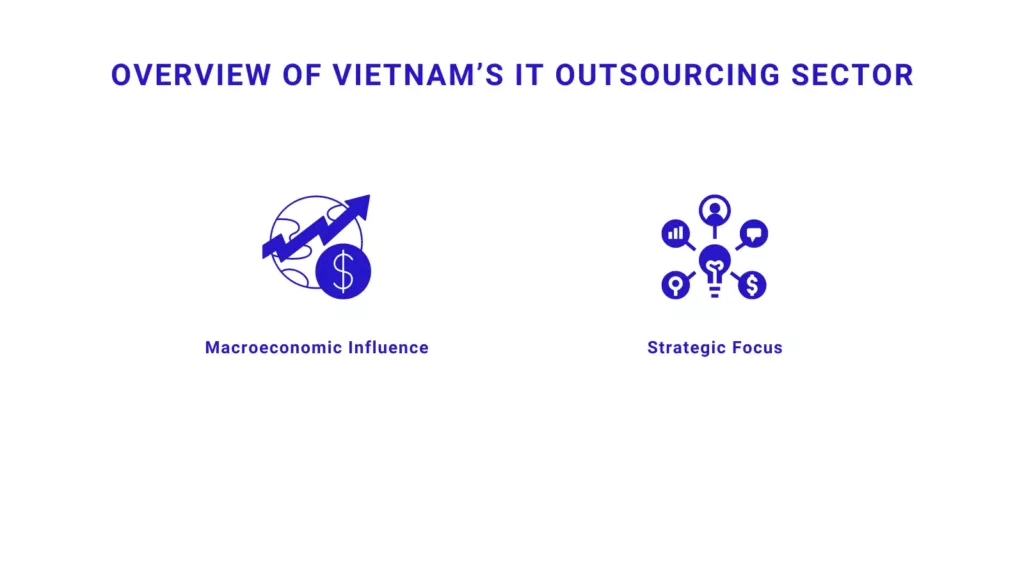
Vietnam’s dedication to advancing science and technology has led to a flourishing ICT market, valued at $7.7 billion in 2021, with ongoing growth fueled by digital adoption in both the public and private sectors.
Macroeconomic Influence: Vietnam has emerged as one of the fastest-growing economies globally, buoyed by a stable political environment and government support for the IT industry. Furthermore, rising investments in cutting-edge technology and startup funding fuel the market’s expansion.
Strategic Focus: According to the International Trade Administration, the Vietnamese government recognizes Information and Communication Technology (ICT) as a pivotal industry and a driver of socio-economic progress. Additionally, Vietnam’s commitment to core tech advancements is evident through significant investments in AI and cloud computing by the government and major companies.
Due to the above elements, the IT outsourcing industry in Vietnam is growing rapidly with an impressive annual growth rate of 16.38% from 2024 to 2028, resulting in a substantial market volume of US$1,282.00 million by 2028.
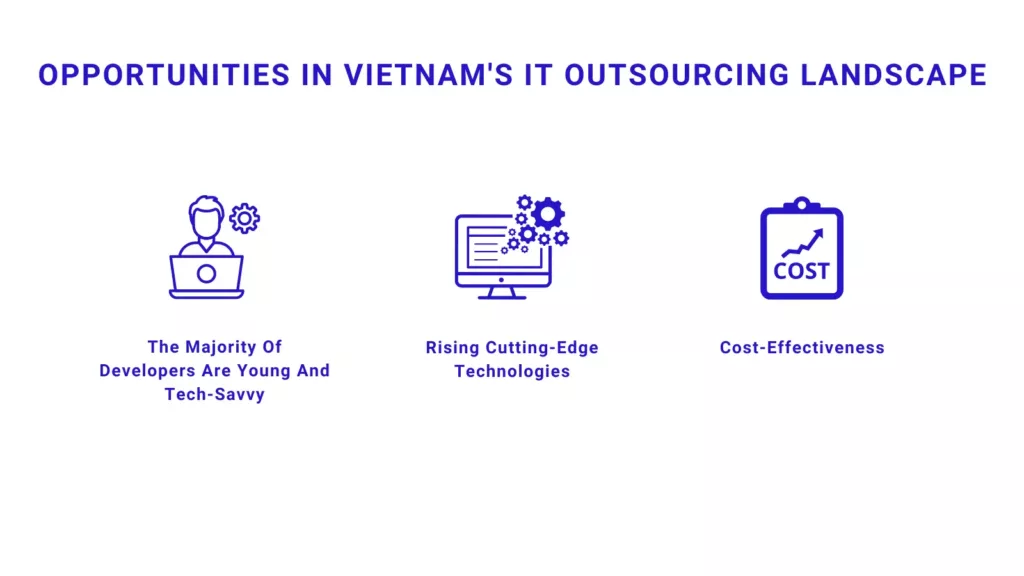
Around 56% of developers fall within the 20 – 29 years age group, this number is expected to form about one-third of Vietnam’s workforce by 2025.
There are approximately 50,000 to 57,000 students who graduate in university IT programs annually. Due to this, Vietnam was ranked among the top 10 globally for IT graduates and the top 6 for quality software services. TopDev’s 2023 report highlights that Vietnam’s robust community of around 530,000 tech professionals is well-suited to meet the varied demands of international businesses.
Moreover, the Ministry of Education and Training manages IT education in Vietnam. Recent changes have allowed more flexibility in higher education institutions to encourage innovation. For instance, separate entrance exams for each institution have been eliminated, resulting in improved admission rates.
Cloud computing in Vietnam has grown at a 30% CAGR recently, driven by robust IT infrastructure and data centers. This progress aligns with Vietnam’s digital transformation agenda. Moreover, with the aim of data security, many Vietnamese companies prefer “make in Vietnam” cloud computing services to foreign ones.
Vietnam has also made strides in artificial intelligence readiness, moving from 55th to 39th globally. It ranks 9th in East Asia and 5th in ASEAN, with an AI readiness score of 54.48.
In 2023, the average monthly salary for developers with fresher-level salaries at $514 and for director-level salaries at $2,680. Overall, the annual salary of a Vietnamese IT developer is $7,173, which is incredibly low, it only amounts to nearly 25% of Chinese wages ($29.840) and around 35% of Indian wages ($20.464). These cost benefits, coupled with a commitment to high-quality workflows, are making Vietnam an increasingly popular choice for international organizations seeking dependable and affordable IT services.
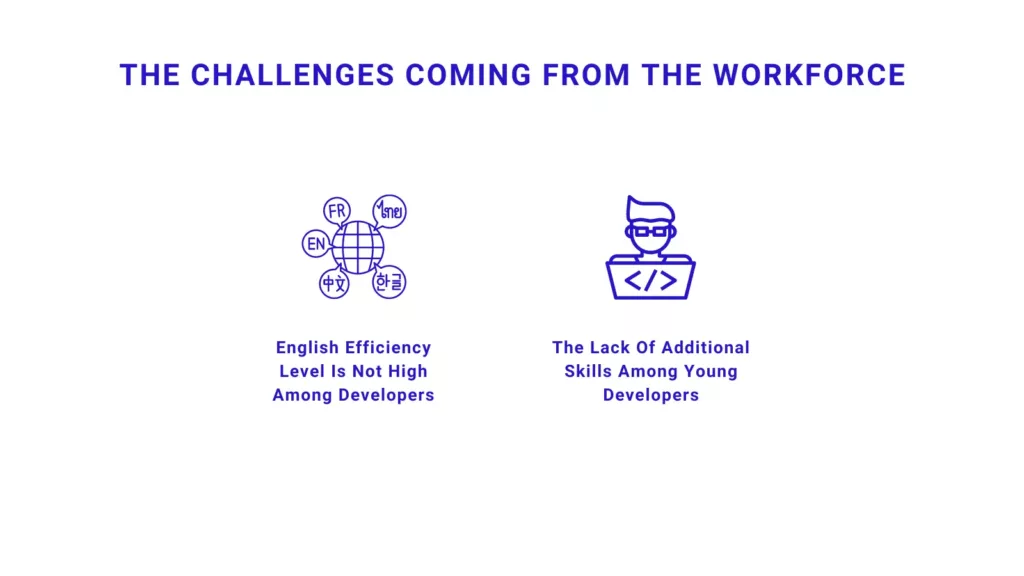
The IT sector’s language requirements are becoming stricter, with over 9% of foreign companies seeking IT staff with professional English skills. The demand for English proficiency has shifted from a nice-to-have to a must-have. Although Vietnamese tech professionals have strong technical abilities and can communicate effectively, their English-speaking skills may not be as advanced as those in other ASEAN countries.
In 2022, only 5% of Vietnam’s workforce was fluent in English, which is less than the fluency rates in Indonesia (10%), Malaysia (21%), and Thailand (27%). This has caused a challenge in the recruitment process for IT outsourcing that many skilled developers are getting denied due to their English level.
Additionally, the new generation of developers, mainly Gen Z, is experiencing a growing skills gap because of the fast-paced technological changes. Yet, an impressive 72% of them are keen to learn digital skills, which is higher than the global average of 52%. This enthusiasm is a positive sign for the future, showing they understand the challenges and are ready to tackle them.
Upon engaging with SECOMM, you will gain access to a dedicated IT team that meets standards in English proficiency and technical competency. Book your FREE consultation with SECOMM’s experts today.
Explore SECOMM’s project: Assembling a Specialized Vietnamese IT Team for LandNow’s Website Development.
3. To Sum Up!
Vietnam’s IT outsourcing market has seen consistent growth, thanks to significant investments from both the government and foreign companies. If you’re seeking an IT team provider in Vietnam, consider SECOMM. Their exceptional talent can drive innovation and elevate your business objectives. Reach out to SECOMM at (+84) 28 7108 9908 to explore a partnership.
 4
4
 3,428
3,428
 0
0
 5
5
The IT Outsourcing market worldwide is projected to grow annually by 10.99%, reaching a market value of US$777.70 billion by 2028.
While India and China have long been the go-to nations for IT dedicated teams, new players like Vietnam are gaining ground. Companies have various choices based on language, cost, culture, and government support.
In this blog, SECOMM will explore the advantages and disadvantages of outsourcing IT functions to India, China, or Vietnam. This analysis will help companies make informed decisions about which country aligns best with their resources and strategic objectives.
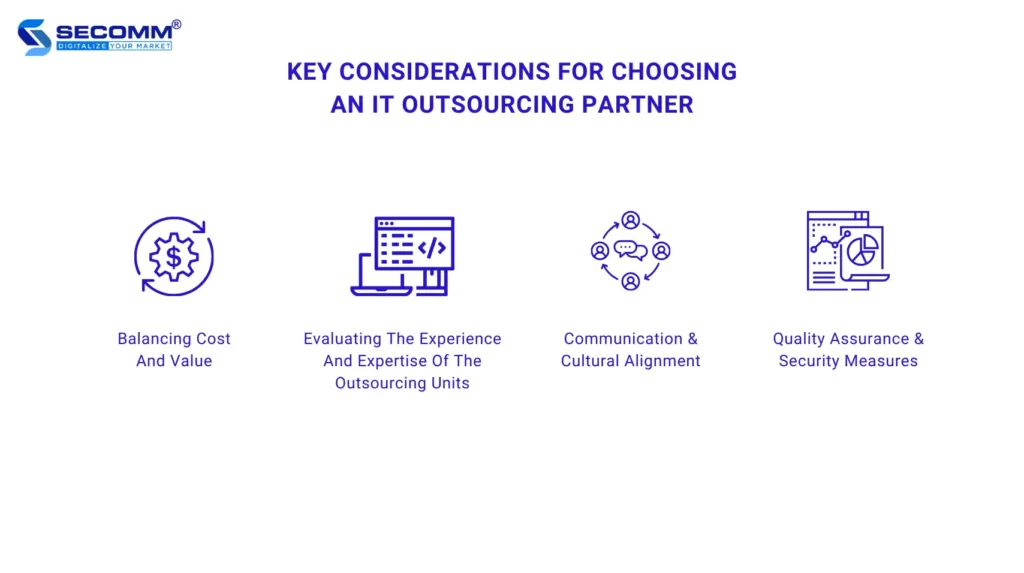
Before going further into the main points of the three countries, there are some key points that companies should be aware of when choosing an IT outsourcing partner.
Selecting a partner who can provide both quality and competitive pricing is vital for the company’s campaign success. When assessing cost benefits, look beyond immediate savings. Consider the long-term expenses of communication, travel, staff turnover, and management tasks. These factors can impact your financial outcomes over time. For example, a company outsourcing to a country with low English proficiency may lead to communication challenges. To address this, the company might need to employ a local translator to ensure smooth operations.
A Deloitte study reveals that 59% of companies outsource software development for specialized skills and expertise. It’s important to choose partners known for providing skilled IT professionals and delivering projects akin to yours. Experience in similar projects or industries is a plus, as partners with relevant domain knowledge can offer valuable insights and tailored solutions. For example, in Vietnam, SECOMM is one of many companies proud of its ability to handle big projects globally easily due to its past experiences of working with many big names in the eCommerce industry.
Cultural alignment and good communication are important but often ignored in outsourcing partnerships. Your partner should have values, work ethics, and communication methods similar to your company’s. Communication should be transparent and frequent throughout the project. Choosing a partner with staff who speak a language that both parties understand is important to avoid language barriers that could slow down progress.
Quality control is vital for software that’s free of bugs. Your outsourcing partner should follow the best practices in data security and software development. Quality assurance tests should be part of the development process to catch and fix issues early. Security is equally important for outsourced DevOps services. Check their security measures, data protection policies, and compliance with industry standards. They must protect sensitive data according to industry regulations and have clear methods for protecting intellectual property and confidential information.
Outsourcing to China is a strategic choice for many Western companies, largely due to the cost-effective services and access to a highly skilled workforce. China’s e-commerce market is the largest globally, and the country offers a stable economic environment, low corporate taxes, and numerous top-tier seaports. Moreover, China boasts one of the world’s largest and most proficient tech talent pools, adding to its appeal as an outsourcing hub.

Outsourcing IT to China offers clear financial benefits. Chinese developers provide services at competitive rates, which can lead to significant cost savings for businesses. This affordability doesn’t come at the expense of talent, as China has a large pool of skilled developers. The salaries for these developers are generally lower than in the US where Chinese professionals often charge around $50 to $100 an hour, with an average of around $29,840 a year.
Moreover, China is a leading tech hub with one of the largest and most skilled IT dedicated teams in the world. By 2024, the global number of developers is expected to reach 28.7 million, with China contributing significantly to this growth. The country’s developer population is growing at a rate of 6% to 8%. China also prioritizes high-quality education, with 24 of its universities ranked among the top 200 worldwide. The Chinese government is actively launching educational initiatives to enhance technical skills, preparing its citizens for the evolving digital world.
The government invests in projects and infrastructure to aid these companies and streamline outsourcing. In 2020, China announced a massive $1.4 trillion investment to enhance public digital infrastructure. This investment is a boon for companies considering China for digital outsourcing, as it simplifies the integration of local talent.
Additionally, there are still some issues that companies need to be aware of when contacting the IT dedicated team in China. Firstly, language barriers are significant when outsourcing to China, as not all IT professionals are proficient in English, potentially causing miscommunications and project delays. Cultural variances can also affect how communication is perceived and managed.
Additionally, on the topic of intellectual property, China’s laws may vary from those in other nations, posing a risk to the security of your ideas. Moreover, stringent data privacy and security regulations by the Chinese government can pose operational challenges for foreign IT service providers.
India has consistently been a dominant force in the global IT outsourcing sector, attributed to its extensive talent pool of IT experts and a favorable business ecosystem. The industry is projected to witness a compound annual growth rate (CAGR) of 17.58% between 2024 and 2028, culminating in a projected market value of USD 20.09 billion by 2028.
Clients within India’s IT outsourcing market demand cost-effective, high-caliber services. They seek partnerships with firms that offer comprehensive services, including software development, maintenance, and support, and value providers with industry-specific experience who can deliver solutions tailored to their precise needs. Additionally, India is ideal for businesses seeking experienced developers with strong communication skills for complex projects.

Local outsourcing providers efficiently manage the entire process, including procurement, installation, and testing, ensuring a cost-effective and seamless experience. For example, establishing a website or developing a mobile application can be expensive, but outsourcing to India can reduce these costs by nearly 50%.
Furthermore, India’s lower living costs result in more affordable labor compared to countries like the United States. To illustrate, the average yearly salary for an IT employee based on Glassdoor in India is around $20,464, starkly contrasting the U.S. average of $109,829.
The country’s diverse population contributes to a workforce that includes programmers, scientists, financial experts, MBAs, journalists, and virtual assistants with exceptional skills.
India’s government-funded higher education system is the third-largest globally, after the US and China. According to Statistica, India has over 6.5 million graduates each year, significantly more than the Philippines, which is a major competitor in the BPO and outsourcing sector.
While Indians are proficient in English, the accent may sometimes lead to misunderstandings in verbal communication. It’s advisable to conduct most communication in writing, through emails and chats, to reduce miscommunication risks and maintain a written record for reference if needed.
In software development and IT, the risk of intellectual property (IP) being copied is significant. Without proper safeguards, there’s no guarantee of protection, as projects might be resold.
To protect your interests, it’s wise to sign an NDA with your outsourcing partner. Be careful with IP issues and consider getting legal advice for big projects with substantial financial stakes.
Vietnam has gained prominence in the IT outsourcing industry over the last ten years. It’s now a significant force globally, with a focus on software development, digital content, and BPO. The growth of Vietnam’s IT outsourcing sector is attributed to its youthful, talented workforce, competitive labor costs, and supportive government policies. Plus, its strategic position in Southeast Asia adds to its appeal as an outsourcing hub for regional and international businesses.

Outsourcing to Vietnam offers a key benefit: access to skilled tech talent at affordable rates. Vietnam, located in one of the world’s most cost-effective regions, has leveraged this to become the 6th top destination for software development. In 2022, Vietnam was rated 99.6/100 for low manufacturing costs by US NEWS and is among the lowest in Asia.
This results in significantly reduced IT outsourcing costs compared to other countries. For instance, the average annual income for a developer in Vietnam is approximately $7, 173, which is the lowest among the three. This represents a cost reduction of up to 94% compared to the US, 65% compared to India, and 76% compared to China.
Vietnam’s pool of highly educated and tech-savvy young professionals, many of whom have studied or worked abroad, makes it an attractive destination for outsourcing. Additionally, Vietnam offers technical training in various programming languages through its universities and technical schools, producing around 400,000 IT engineering graduates and 50,000 IT students annually.
Overall, Vietnam is well-equipped to meet the skilled workforce demands of employers seeking outsourcing opportunities, with a lower turnover rate compared to other countries in the field. Companies in Vietnam experience an IT-related turnover rate of less than 5%, making it an appealing choice for businesses.
Major multinational companies and tech giants, including Intel and Microsoft, have established a strong presence in Vietnam by outsourcing software development and IT support services. Additionally, other firms like IBM, Cisco, and Bayer are also expanding their IT roles in Vietnam.
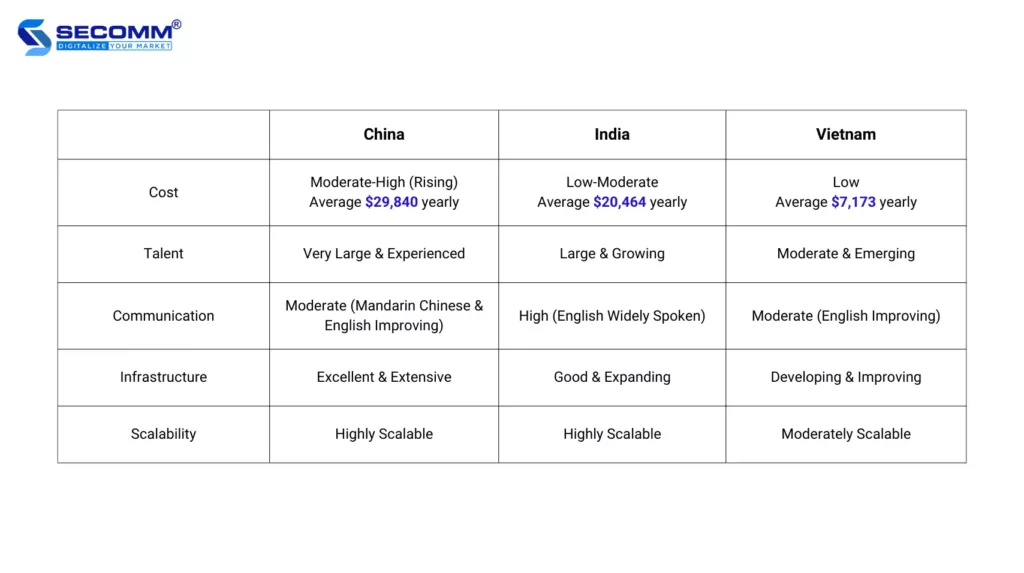
The involvement of these esteemed organizations serves as a testament to Vietnam’s adeptness in managing substantial outsourced or offshore software development initiatives, despite its status as a relatively small emerging nation in contrast to larger, more developed counterparts such as India and China.
Overall, China’s large, albeit aging, labor force and developed infrastructure are offset by rising costs and regulatory concerns. While India shines with its vast, young talent pool, cost-effectiveness, and robust infrastructure, making it a strong contender for scalability and quality. Finally, Vietnam emerges as a compelling choice with its youthful, tech-savvy workforce, competitive costs, and rapidly improving infrastructure.
Read more: IT Outsourcing in Vietnam: Benefits and Challenges
SECOMM stands out with over a decade of experience for organizations seeking a reliable IT-dedicated team in Vietnam. Engaging with SECOMM means your IT projects are in the hands of exceptional talent, driving innovation and advancing your business objectives. To explore a partnership with SECOMM, reach out or dial the hotline at (+84) 28 7108 9908 for a collaboration that can elevate your IT capabilities.
 10
10
 2,938
2,938
 0
0
 1
1
With the economic challenges post-COVID-19, IT outsourcing has become a go-to solution for businesses aiming to use their budgets effectively. They’re partnering with outsourcing companies for IT tasks instead of solely depending on in-house teams.
Meanwhile, the IT sector is rapidly growing, fueled by ongoing tech advancements. Outsourcing is crucial to this growth, which is expected to soar to USD 525.2 billion by 2030, growing at a CAGR of 9.4% from 2023 to 2030. This points to a sustained high demand for IT outsourcing well into the decade.
When considering outsourcing software tasks, it’s crucial to identify the best countries for the job. The ideal locations are those that excel in technological expertise, offer favorable business environments, lead in innovation, and have strong English language proficiency. The following list will highlight the top 10 countries with stand-out IT dedicated teams that could be considered prime choices for IT outsourcing services.

India has consistently been at the forefront of the outsourcing sector and is renowned for its extensive pool of IT and software development talent. The country’s cost-effective services, proficiency in English, and solid tech infrastructure have established it as a preferred choice for global businesses. With more than 1.5 million IT graduates each year, India ensures a continuous influx of skilled professionals to satisfy the increasing demands of the outsourcing market in Asia.
Moreover, India’s cost structure is generally more affordable than Western countries, making it an attractive option for companies looking to outsource development tasks. For instance, according to Upwork, software developers in India typically charge between $18 and $39 per hour, which is significantly lower than the $50 to $60 per hour rate in the United States or Germany, with the average rate from $150 to $250 per hour. This combination of a large, skilled workforce and competitive pricing positions India favorably against other leading IT outsourcing destinations.

Just like India, China’s massive talent pool and diverse skill set make it one of the best countries for outsourcing, and it has emerged as an IT outsourcing power dominating the labor market. With an education system that promotes Math and Science, China provides some of the world’s best technology and IT services.
In terms of talent pool, China is one of the largest producers of IT graduates worldwide, boasting over 3 million IT graduates a year (this number is quite significant compared to India due to its large population). This vast number of highly educated and skilled individuals further solidifies China’s position as a desirable destination for outsourcing.
Additionally, the Chinese government actively supports IT development and invests in education to build a strong talent base. It focuses on advancing STEM (science, technology, engineering, and mathematics) education, which is essential for the IT sector. This approach improves learning in science and math, which is foundational for IT expertise.
In 2024, China remains a competitive choice for outsourcing, with an average IT outsourcing salary of about $20-$45 an hour, striking a balance between cost-effectiveness and quality output. This affordable rate and the country’s commitment to technological advancement make China an appealing choice for businesses worldwide.

The Philippines is a sought-after hub for software development outsourcing and BPO is favored for its cost-effective labor and proficient workforce. English is the official language, simplifying communication and aligning with the country’s strong cultural connections to the US. This understanding of Western work culture is a significant advantage, especially since 94% of the population speaks English.
With around 190,000 developers stationed in key BPO centres like Manila, Cebu, Davao, and Bacolod, the Philippines is recognized as a leading IT outsourcing hub, especially in the healthcare and fintech sectors.
The educational system in the Philippines annually produces approximately 200,000 IT graduates, emphasizing IT and technical skills to create an adaptable and globally competitive workforce. In 2024, the average IT outsourcing salary stood at around $20-$60 an hour, affirming the Philippines’ position as one of the most economical offshore outsourcing destinations.

Similar to the Philippines, Brazil shares cultural affinities with the US, which translates into high-quality IT services at competitive rates. This cultural resonance, coupled with its strategic location, makes Brazil a preferred partner for North American IT firms.
Brazil’s commitment to building a skilled tech workforce is reflected in the production of about 150,000 IT graduates each year. The government’s efforts to perfect the technological education infrastructure set Brazil apart as a top destination for offshore software development.
Although Brazil’s outsourcing costs are slightly high, with the average IT outsourcing salary at approximately $20-$50 an hour and an annual software engineer salary of around $12,000, it remains a competitive market. The country’s youthful population, 38% of which are young, positions Brazil as an ideal locale for hiring junior developers, underlining its robust and skilled tech workforce.
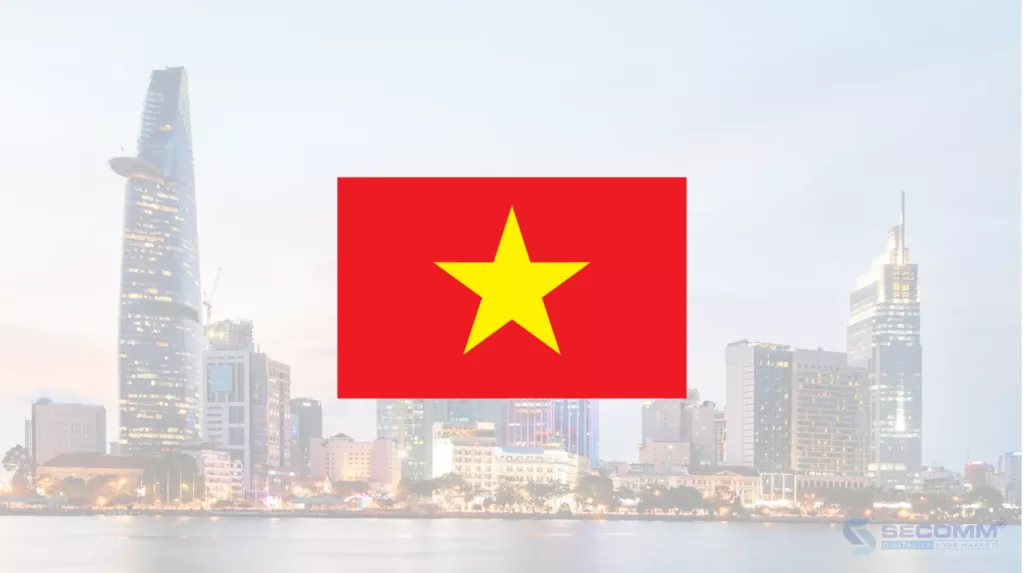
Vietnam is advancing as a notable destination for IT outsourcing, backed by a vast pool of skilled IT professionals. The country’s educational system, with over 300 IT-focused universities and centres, produces around 57,000 IT graduates each year. The Vietnamese government’s dedication to the IT sector is evident through supportive policies and incentives, contributing to Vietnam’s ranking within the top 50 digital nations.
The IT outsourcing market in Vietnam is forecasted to reach $698.90 million in revenue in 2024, with an anticipated annual growth rate of 16.38%, leading to a market volume of $1,282.00 million by 2028. The enterprise software segment is expected to achieve a market size of $247.3 million by the end of 2024. Moreover, the average spend per IT outsourcing employee is projected to be $11.80 an hour in 2024. These figures highlight a dynamic IT outsourcing market with an outstanding IT dedicated team in Vietnam, with growing employment and increasing value per employee, reflecting the nation’s investment in education and technological infrastructure.

Poland is a standout choice for IT outsourcing within Europe. Its central position in Europe and EU membership and a strong pool of software engineering talent make it an attractive base for businesses looking to grow in the European market.
The country’s IT industry is well-developed and supported by numerous universities that provide computer science education. Recent reports indicate that there are between 63,000 and 78,000 students enrolled in IT and ICT degree programs, with an annual graduation rate of about 10,500 to 13,500.
A significant draw for the IT Outsourcing market in Poland is the cost-effective yet highly skilled workforce, which is more affordable than in many other European nations. The cost for offshore software development services in Poland typically ranges from $40 to $56 per hour, depending on the project. This positions Poland as one of the leading Eastern European countries for cost-efficient programming expertise.

Malaysia is gaining traction in the IT outsourcing industry due to its cost-effective solutions and skilled workforce. Over 60% of Malaysians speak English, which, along with strong government support, makes the country an appealing outsourcing destination.
Annually, Malaysia produces around 100,000 IT graduates, reflecting its commitment to digital skills development. The government bolsters this with initiatives like tax incentives and funding for R&D.
In Malaysia’s tech sector, the average monthly salary is about $3,500, with an hourly rate of $14. These rates are lower than in the US or Western Europe. Moreover, a key development in Malaysia’s IT outsourcing is the growth of cloud computing and mobile app development. IT firms are investing in these technologies to offer better and more cost-effective services.

Argentina’s IT industry is attractive to US and European clients due to English proficiency, cultural similarities, and time zone alignment. Competitive pricing and a highly skilled workforce add to its appeal. Web developers’ costs vary from $20 to $60 per hour, or around $14,100 yearly, based on experience.
With over 115,000 developers, many from top universities, Argentina’s education quality is evident. The country’s 2023 QS World University Rankings featured over 40 renowned computer science programs, 14 of which are in Buenos Aires, ensuring well-educated IT professionals.

Egypt’s rise in the IT outsourcing market is attributed to its skilled workforce and cost-competitive services. The country’s low labor costs, combined with a large pool of engineering and development talent, make it a lucrative option for companies seeking IT outsourcing services.
The average hourly rate for IT outsourcing in Egypt in 2024 was between $25 and $50, presenting a budget-friendly choice for businesses. The ITIDA reports that an IT professional’s average annual salary in Egypt is about $10,000, significantly below the global average of $45,000.
Egypt’s educational system contributes around 50,000 IT graduates each year to the industry, ensuring a steady supply of technically skilled professionals. The Egyptian government is proactively enhancing the IT sector by offering incentives and training to expand the talent pool. This initiative is expected to grow the industry significantly.

Mexico’s IT Outsourcing market is attractive for several reasons, including cost savings, access to a pool of skilled talent, and the ability to quickly scale operations.
In 2024, the average hourly rate for IT outsourcing in Mexico was estimated to be between $20 and $40. While this rate is slightly higher than some other outsourcing destinations, it is balanced by the advantages of geographical closeness, time zone compatibility with the US, and a deep understanding of Western business practices.
Mexico’s higher education system is on par with that of the United States and Europe, contributing to the supply of skilled IT professionals, with approximately 120,000 IT graduates produced annually.
The Mexican IT Outsourcing industry has seen steady growth over the past decade and is currently ranked as the fourth-largest IT outsourcing destination in Latin America. The industry’s expansion is expected to continue, driven by increasing demand for services such as software development, data analytics, and cloud computing.
To Sum Up!
The IT outsourcing market in 2024 is a strategic asset for businesses aiming to innovate and grow. It offers cost-effective access to skilled talent, driving operational efficiency and competitive advantage. Outsourcing is no longer just an option; it’s a strategic necessity that allows companies to focus on core competencies while outsourcing non-core activities to experts worldwide.
At Secomm, we can provide you with the best of our IT dedicated team, who have more than 10 years of experience in the IT sector. Feel free to contact SECOMM or call our hotline at (+84) 28 7108 9908 to ensure that your IT operations are handled by top-tier talent, fostering innovation and propelling your business forward.
 2
2
 3,869
3,869
 0
0
 2
2Subscribe to get the latest eBook!
Hotline